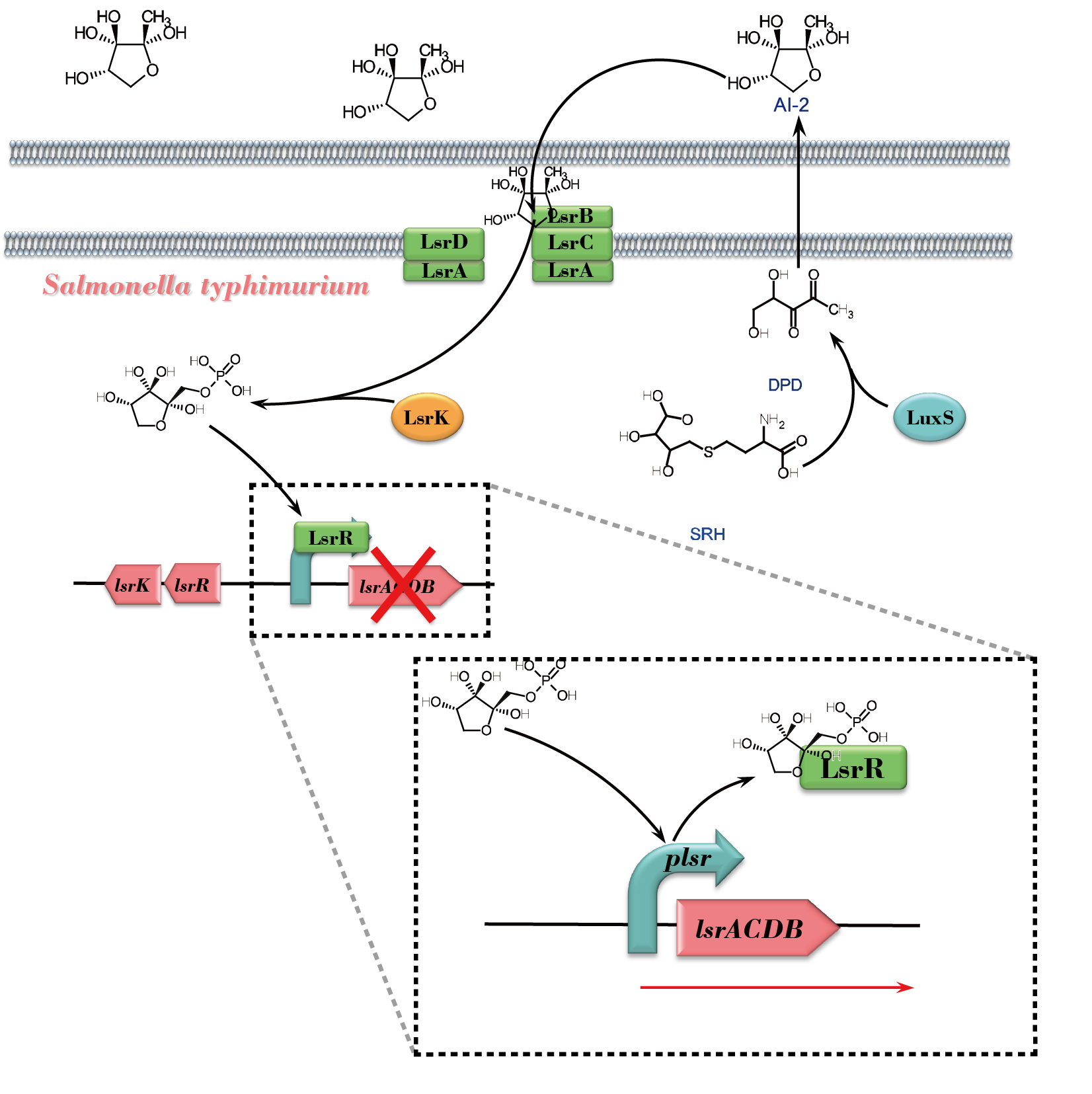Part:BBa_K1666000
LsrA of LuxS/AI-2 signaling pathway in Salmonalla
Quorum sensing is a process of bacterial cell-to-cell communication involving the production and detection of extracellular signaling molecules called autoinducers. And autoinducer-2 (AI-2) has been proposed to serve as a 'universal signal' for interspecies communication. In the LuxS/AI-2 signaling system of Salmonella Typhimurium, AI-2 response involves ATP binding cassette transporter encoded by genes named Lsr (LuxS regulated). And LsrA is the ATP-binding protein which provides energy for AI-2 transport. In our project, we set this protein-coding part under a nisA promoter and try to integrate them in the genome of Lactobacillus or Lactococcus for the final purpose of constructing an integrated AI-2 response pathway of Salmonella in the engineered bacteria.
Usage and Biology
In quorum sensing process, bacteria communicate with one another using secreted chemical signaling molecules termed autoinducers. As the density of the bacterial population increases, so does the concentration of secreted autoinducer molecules. When the concentration of the autoinducer reaches a critical threshold, it diffuses back into the cell and activates or represses certain target genes.
An autoinducer called AI-2 is generated by many species of Gram-negative and Gram-positive bacteria. Depending on the bacteria, response to AI-2 can follow one of the two identified routes. In one group of bacteria exemplified by Salmonella, AI-2 response involves genes named Lsr (LuxS regulated) that encode ATP binding cassette-type transporter. And LsrA is ATP-binding protein of the ABC transporter.

In our project, we set this protein-coding part under the regulation of a nisA promoter, which can be activated by food-grade inducer, nisin. Since the AI-2 response in Lactobacillus or Lactococcus is a different process from Salmonella, we tried to integrated LsrABCDRK genes in the genome of the lactic acid bacteria to construct intact membrane channels. And LsrA is an essential part due to its function of providing energy for AI-2 transport.

Sequence and Features
- 10COMPATIBLE WITH RFC[10]
- 12COMPATIBLE WITH RFC[12]
- 21COMPATIBLE WITH RFC[21]
- 23COMPATIBLE WITH RFC[23]
- 25INCOMPATIBLE WITH RFC[25]Illegal AgeI site found at 939
- 1000COMPATIBLE WITH RFC[1000]
//function/structures
| biology | Salmonella typhimurium |
| protein | LsrA |

